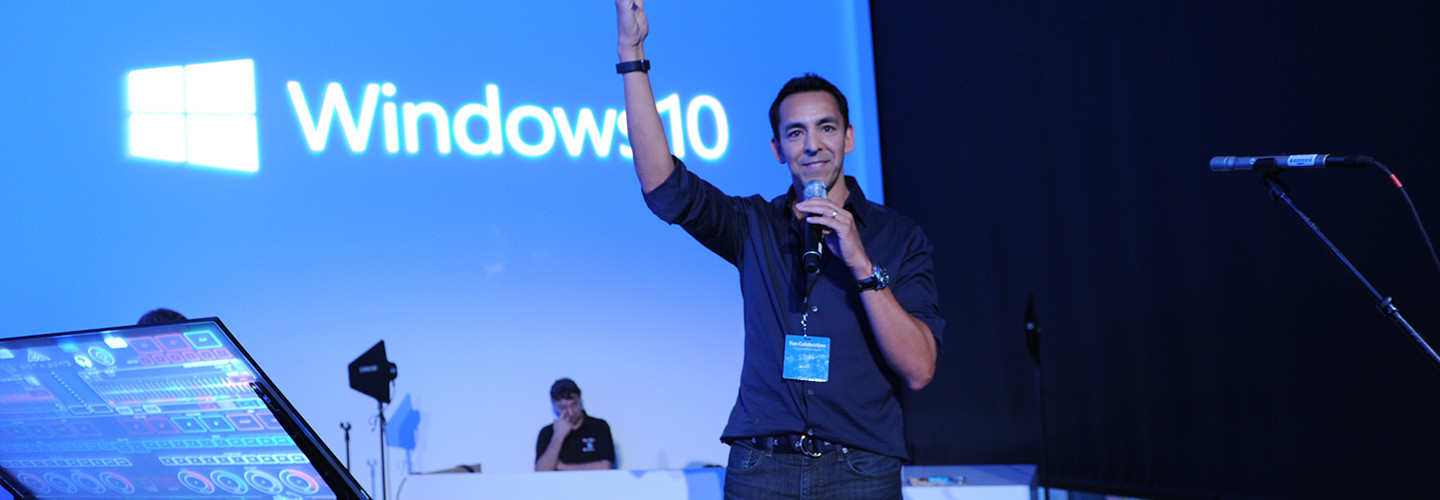Financial Services Businesses Are Evaluating but Not Yet Upgrading to Windows 10
Microsoft is in an earnest campaign to win back the hearts and minds of its users, and Windows 10 is the first step in assuring enterprise and consumer users that Microsoft can deliver what they need and want.
While many observers have focused their attention on the fact that Microsoft “skipped” Windows 9 and jumped to Windows 10, the bigger story here is that Windows 10 is the first of a new breed of Windows operating systems that’s more like Windows-as-a-service.
“It’s not just simple mechanics, although there are big changes in terms of our development methodology, our deployment policy, our servicing. It’s much more fundamental than that. For us, it is about aligning our goals of successful Windows with customers and their experience and engagement with Windows. That’s what Windows-as-a-service means,” said Microsoft CEO Satya Nadella this past January, according to a report from PCWorld.
So far, the response to Windows 10 has been largely positive. The OS, which was released at the end of July, has over 14 million installs and counting. But some in the financial services sector are taking a wait-and-see approach before flipping the switch on Windows 10 organizationwide, opting to instead stick with the now five-year-old Windows 7.
“What I like about Windows 7 is that it is familiar,” said Chris Chen, an adviser with Insight Financial Strategists, in Waltham, Mass., in an Investment News story. “I know how to use it … it does its job that you require it to do, and that's great.”
Windows Can Power Mobile Banking Experiences
While many organizations inside and outside of financial services sat out the Windows 8 upgrade, passing up Windows 10 could cost them much more dearly, because the use of mobile devices in financial services has only increased since Windows 8 was released.
In a survey conducted in December 2014, the Federal Reserve found that “39 percent of all mobile phone owners with a bank account have used mobile banking in the 12 months prior to the survey, up from 33 percent in 2013 and 29 percent in 2012.”
If that trend continues, financial services organizations still operating exclusively on Windows 7 could be left behind, because that OS was not built with mobility in mind.
Microsoft positions Windows as a powerful mobile platform for financial services on its website, saying:
Windows devices help financial advisors connect with customers and provide client services on-the-go. Advisors create an engaging experience when they share their screen to review the client’s financial information in real–time and deliver personalized recommendations.
While some people may believe that Microsoft has swung too far, too soon on the mobile-desktop pendulum, the trend toward mobility in financial services is an unavoidable reality of the future.
Windows 10 Promises Increased Security
Along with a more mobile-friendly architecture and interface, Windows 10 also promises more robust and improved built-in security for the OS.
That should be of significant interest to IT leaders in banks, credit unions and capital markets, given the number of data breaches that have hit the financial services industry in the past two years alone.
Ojas Rege, vice president of strategy at MobileIron, spoke with American Banker about the new security features of Windows 10, and he believes that even if financial services IT departments aren’t ready to upgrade, they should be thoroughly testing and evaluating Windows 10 right now.
“If I were the CIO of a bank, this would be the summer for me to think about how even the basic architecture of Windows is changing, the entire architecture of every end user device I have in my organization will shift over the next 12 months in a good way, they're all going to be more secure,” Rege said. “But it does mean some of the security mechanisms I had before and processes and technologies won't be relevant anymore and I'm going to have to make sure I understand the new architecture to put in place the people, processes and tech to make it work.”
So while testing and vetting mission-critical hardware and software before upgrading to a new operating system is wise, ignoring the shifting trends in mobility and cybersecurity isn’t. And these forces could influence some financial services organizations to jump onboard the Windows 10 train sooner rather than later.








